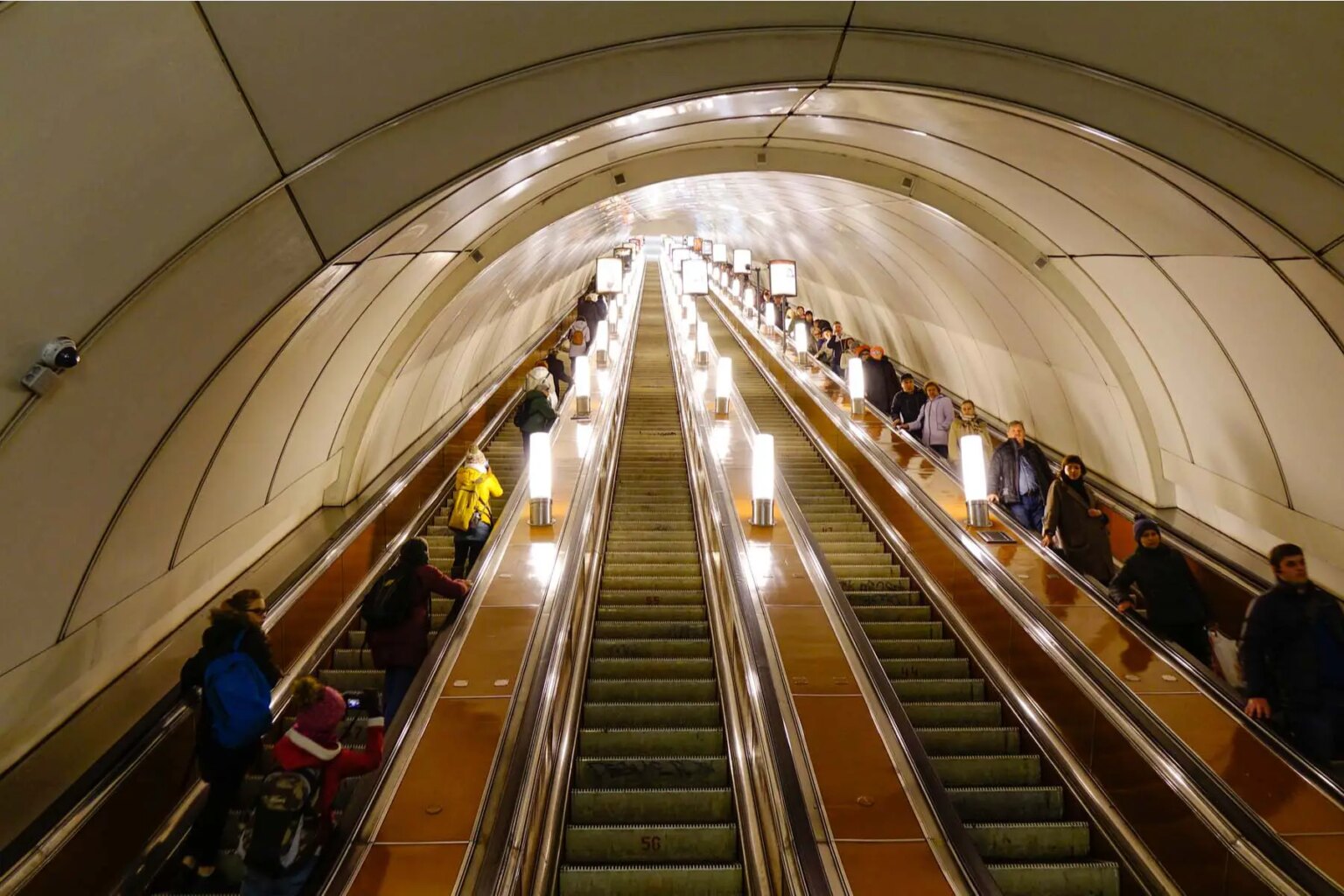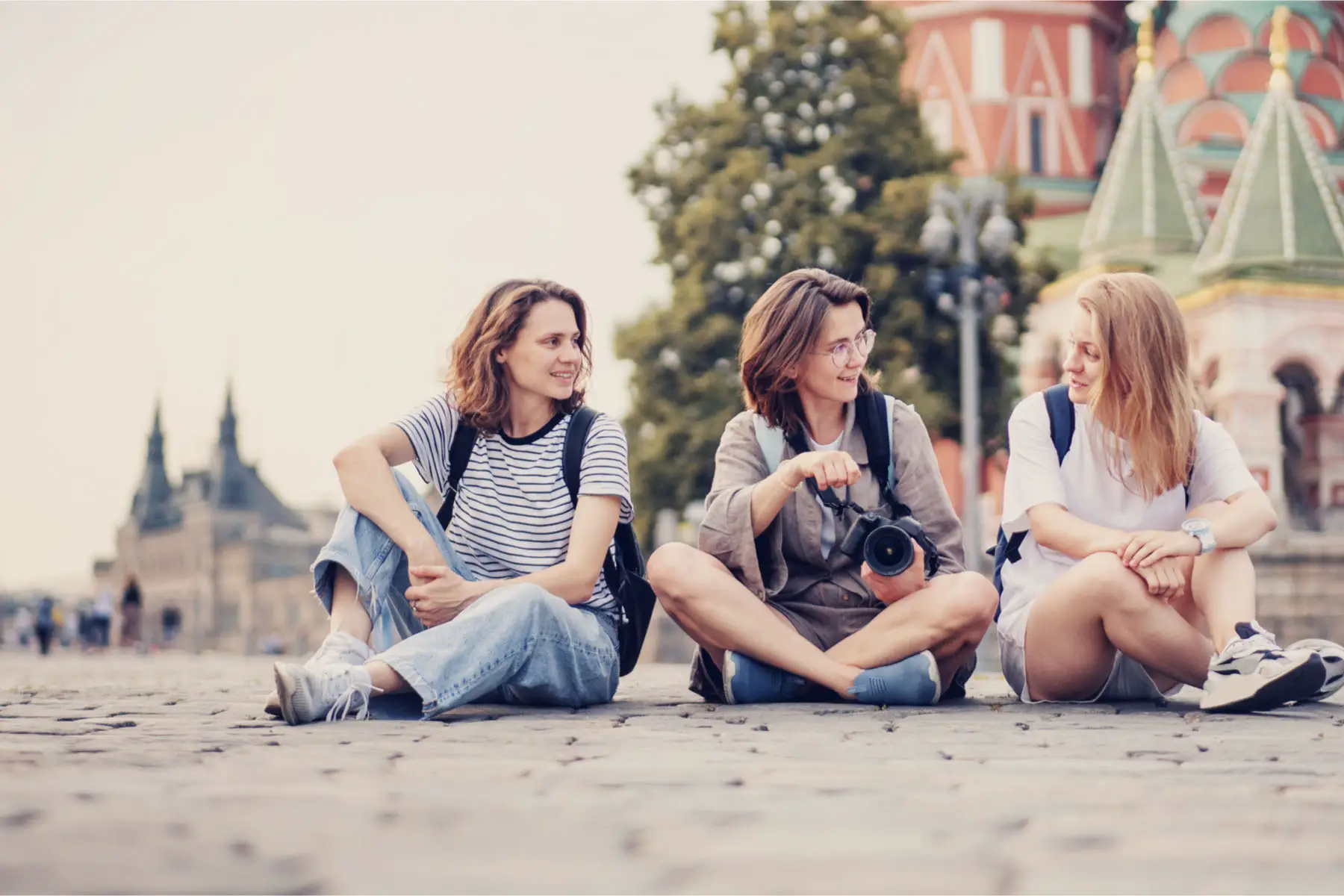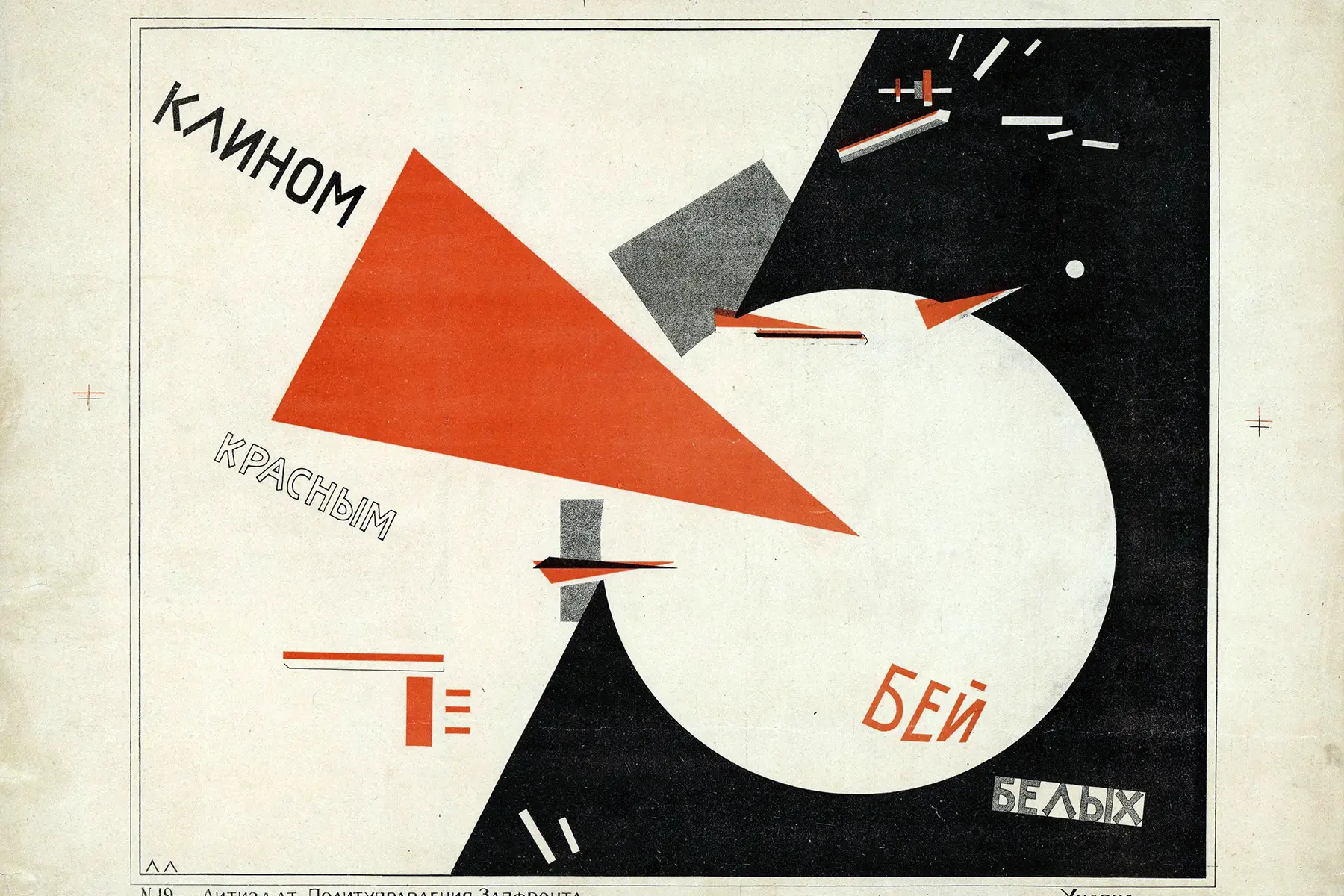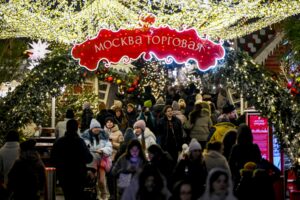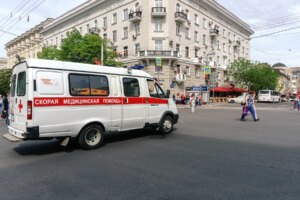Important notice from the Editor in Chief
Maintaining our Russian site is a delicate matter during the war. We have chosen to keep its content online to help our readers, but we cannot ensure that it is accurate and up to date. Our team endeavors to strike the right balance between giving information to those who need it, and respecting the gravity of the situation.
Covering a vast area of Europe and Asia, Russia is a diverse and exciting place. It’s known for its history and intriguing politics, as well as its rich culture and literature. This list of 30 facts about Russia will help you get to know this country.
- 1. Russia is big
- 2. Red Square has nothing to do with communism
- 3. Russia switched calendars in 1918
- 4. The US and Russia are just 4km apart
- 5. The first human into space was Russian
- 6. Russia has a lot of trees…
- 7. …and a lot of fresh water
- 8. Saint Petersburg has a great underground scene
- 9. There are a lot of languages in Russia
- 10. A clock in Saint Petersburg marks the exact moment that Russia became communist
- 11. About 70 cats live in the Hermitage Museum…
- 12. …and apparently, one of them is psychic
- 13. Stalin is more popular than ever
- 14. Russia is home to the only Buddhist region in Europe…
- 15. …and its capital has an entire suburb devoted to chess
- 16. Most Russians live in Europe
- 17. Russia is a big producer of fossil fuels
- 18. Lake Karachay has been described as the most polluted spot on Earth
- 19. A Russian has the world’s largest collection of squirrel-related items
- 20. Russians don’t drink that much alcohol…
- 21. …in fact, they prefer tea
- 22. Russian women live 10 years longer than Russian men
- 23. Russia has the longest railway in the world
- 24. Peter the Great imposed a beard tax
- 25. Volgograd is home to the tallest statue of a woman
- 26. Russia has some very long rivers
- 27. The coldest permanent settlement is in Russia
- 28. Lake Onega boasts an island full of wooden churches
- 29. You can visit Lenin
- 30. Russia can be very welcoming
Babbel
Want to get a handle on Russian before moving to Russia? Babbel offers a range of online and in-app courses to suit any schedule. Whether you've got five minutes or a few hours to spare, discover lessons designed by experts on Babbel's helpful mobile app. If you're relocating to Mother Russia, download Babbel and start your Russian journey today.
1. Russia is big
Russia is, quite frankly, enormous. Not only does it span two continents – Europe and Asia – it also has a surface area of 17.13 million square kilometers. That makes it even bigger than the famous ex-planet Pluto, which comes in at just 16.7 million sqkm. Not sure where to live in this huge country? Read about the best Russian cities to live in as an expat.
2. Red Square has nothing to do with communism
That’s right, the famous Moscow square is actually named for its looks rather than any political persuasions. The Russian language is heavily influenced by Old Church Slavonic, which was Moscow’s official literary language until the late 1600s. When Red Square (Красная площадь, Krasnaya ploshchad) was completed in the late 19th century, it was named Красный (krasny), which means ‘red,’ from the Old Slavic word for ‘beautiful.’

3. Russia switched calendars in 1918
Most European countries gave up the Julian calendar in the late 16th century. However, it wasn’t until February 1918 that Russia finally switched to the Gregorian calendar, which it uses nowadays to celebrate its many festivals and celebrations. Apparently, using the Julian calendar led to the Russian Empire being 12 days too late for the 1908 Olympic Games in London.
4. The US and Russia are just 4km apart
Despite spending much of the 20th century ideologically opposed, Russia and the United States are separated by just 4km of water. Indeed, in the middle of the Bering Strait are two islands, Little Diomede and Big Diomede. Little Diomede belongs to the US, while Big Diomede (Остров Ратманова, Ostrov Ratmanova) belongs to Russia. The islands straddle the International Date Line, which means Big Diomede is almost a day ahead.
5. The first human into space was Russian
The famous cosmonaut Yuri Gagarin journeyed into outer space in 1961. If you don’t know the difference between an astronaut and a cosmonaut, wonder no more. A cosmonaut is trained by the Russian Space Agency, while an astronaut is trained by NASA, the European Space Agency, the Canadian Space Agency, or the Japanese Aerospace Exploration Agency.
6. Russia has a lot of trees…
One-fifth of the world’s trees are in Russia. That’s 643 billion trees – the most that any country has. About 45% of the country is covered by trees, much of it in Russia’s boreal forest, or taiga. These thick forest regions were once completely under glaciers and are now home to a whole load of brave species, including the Siberian tiger, wild boars, eagles, and owls. Unfortunately, these forests face threats from deforestation and forest fires, so organizations like the WWF and Greenpeace are doing their best to protect them.
7. …and a lot of fresh water
In Siberia, you’ll find Lake Baikal. Not only is the lake the deepest lake in the world, but it also holds around 20% of the world’s freshwater. Being in this chilly part of Russia, the lake regularly freezes during the winter, which means it’s even possible to drive across it. However, be sure you have the correct permits and go with an experienced guide. Read more about the rules of the road and driving in Russia.
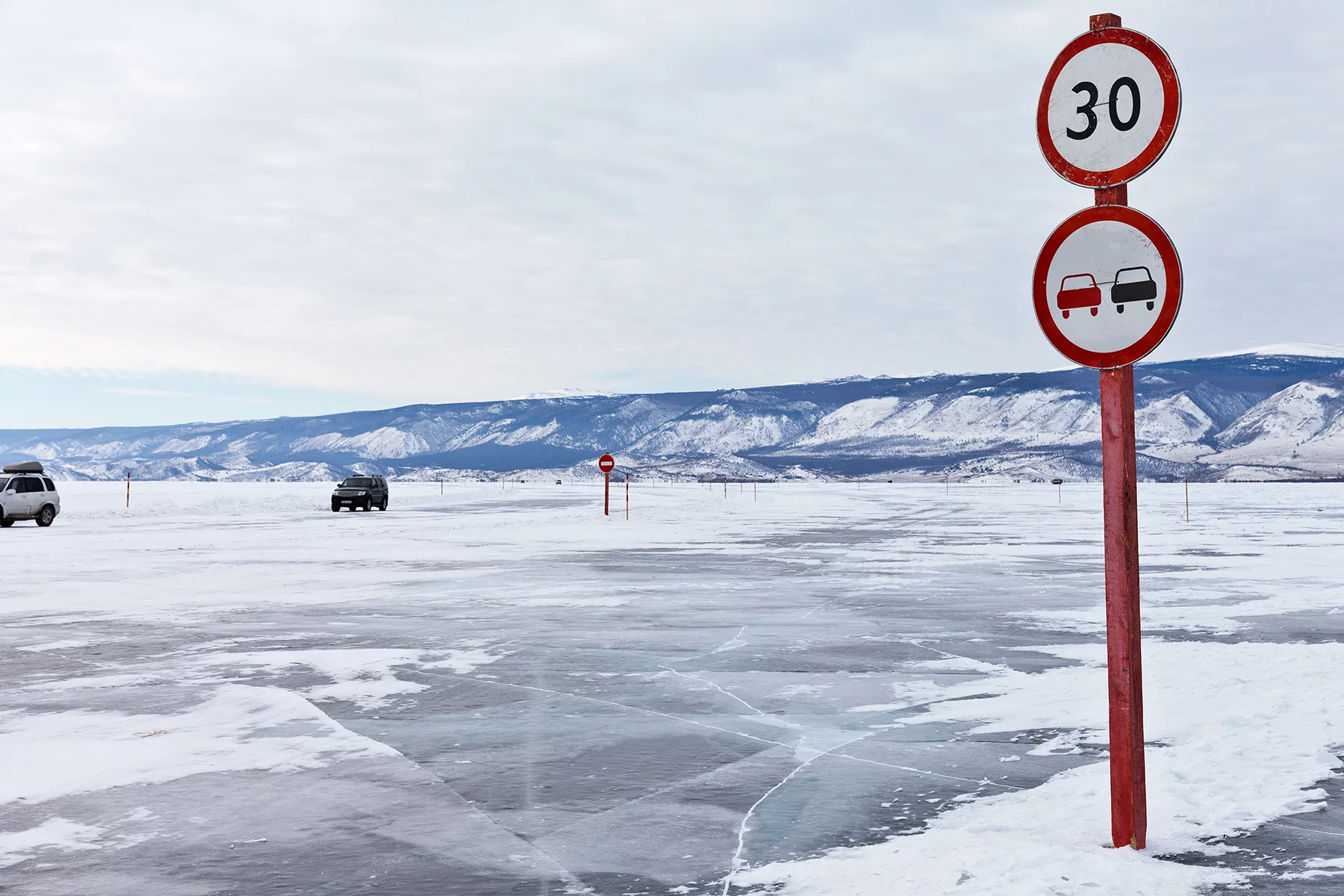
8. Saint Petersburg has a great underground scene
If you live in one of Russia’s two biggest cities – Saint Petersburg and Moscow – you’ll almost certainly use the Metro. However, these metro systems are built way underground, so get ready to spend a lot of time on escalators. For example, Saint Petersburg’s Admiralteyskaya (Адмиралтейская) station has four of the highest escalators in the world – rising 68.6 meters (225.07 ft). It takes about two-and-a-half minutes to go from top to bottom (or vice versa).
9. There are a lot of languages in Russia
Of course, the most popular one is Russian. However, according to the Ministry of Science and Higher Education, the Russian population speaks at least 270 languages and dialects. Whether or not that figure is accurate, there are undoubtedly many languages spoken in Russia. These include major foreign languages such as German and English and languages native to Russia, such as Tatar, Chuvash, Karelian, and Chechen. There are also several endangered languages, such as Votic and Ghodoberi.
10. A clock in Saint Petersburg marks the exact moment that Russia became communist
Or at least, it used to. A clock in the city’s iconic Winter Palace was stopped at 02:10 on 26 October 1917. However, a century later, in 2017, the Hermitage Museum (now housed in the Winter Palace) held an official ceremony to restart the clock. But there’s more to the Hermitage than fine art, Russian history, and clocks…
11. About 70 cats live in the Hermitage Museum…
Legend has it that the cats were invited by Empress Elisabeth way back in 1745. While the cats are taken care of by workers at the museum, there is now a website for potential feline parents to adopt a Hermitage Cat. But don’t worry, you don’t need to live in a former palace to keep a pet in Russia.
12. …and apparently, one of them is psychic
Whether or not you count this as a fact about Russia, it’s certainly intriguing. One of the Hermitage Cats, Achilles, is apparently able to predict the results of football matches. His powers of divination were first called upon in 2017 during the CAF Confederation Cup. In the 2018 FIFA World Cup – held in Russia – Achilles correctly predicted the winner of the first four matches by choosing from two bowls of food with the team’s flag in front of them.

13. Stalin is more popular than ever
According to the Moscow Times, about 70% of Russians approve of former Soviet leader Josef Stalin’s role in Russian history. In recent years, this has gone up, and many factors might have caused it. For example, some see Stalin as a mythological figure, while others say that the current Russian government glorifies the country’s Soviet past while ignoring the human cost.
14. Russia is home to the only Buddhist region in Europe…
The Republic of Kalmykia in southwest Russia is home to the Kalmyk people, a former nomadic group who moved to the region from Asia. Stalin ordered their deportation to Siberia, but they were permitted to return after his death. Since the 1990s, the Republic has boasted magnificent temples, religious shrines, and Buddhist ceremonies.
15. …and its capital has an entire suburb devoted to chess
On the outskirts of Elista, the capital of Kalmykia is Chess City. The Republic’s former (and very controversial) president, Kirsan Ilyumzhinov, built it in 1998 to host the 33rd Chess Olympiad. It contains a chess museum, a giant chessboard, and a Buddhist art museum. Nowadays, it is mostly empty and is seen by many as a misappropriated use of funds.
16. Most Russians live in Europe
The Ural mountain range divides European Russia in the west from Asian Russia in the east. However, despite the latter making up 77% of Russia’s total landmass, less than a quarter of the Russian population lives there. There are several reasons for this, including historical, geopolitical, meteorological, and cultural.
17. Russia is a big producer of fossil fuels
If you live in the EU, you’ve probably used electricity from a Russian pipeline at some point. In fact, Russia provides 27% of the EU’s crude oil imports, 41% of its natural gas, and 47% of its solid fuel (such as coal). Indeed, as the world’s third-largest oil producer, Russia has yet to make renewable energy an absolute priority.
18. Lake Karachay has been described as the most polluted spot on Earth
Lake Karachay in the Southern Ural mountains is one of the most polluted places in the world. Apparently, radioactive waste was dumped here in the 1950s, including weapons and pollution from the nearby Mayak nuclear plant. If you’re considering a visit, don’t. The radiation emitted by the lake could kill you within an hour.

19. A Russian has the world’s largest collection of squirrel-related items
In 2013, Pavel Gerasimov‘s squirrel-related collection numbered 1,103 items. It has likely increased since the last count. The Moscow native has many shapes and sizes of squirrel figurines, including a golden one and another from the 1800s. Funnily enough, he shares his name with an Olympic pole vaulter.
20. Russians don’t drink that much alcohol…
According to World Health Organization statistics, despite Russia’s association with vodka, other countries drink far more. Furthermore, Russia’s average alcohol consumption per year has fallen dramatically over the past few decades. Average per person was 15.8 liters in 2010 and only 11.7 liters in 2016. Indeed, the country now ranks 33rd in the world for liters of alcohol consumed per person. That’s less than many of its European neighbors, such as Germany, France, and the UK.
21. …in fact, they prefer tea
Russia ranks fifth in the world for the amount of tea consumed per person. The drink first reached Russia in the 17th century, but it cost ten times more than in Europe as it took a year to deliver it from Moscow to Berlin. Nowadays, tea is far more accessible, and if you visit friends in Russia, they’ll usually serve you tea accompanied by biscuits. Also, don’t be surprised if your host offers you honey or jam to sweeten your tea – it’s delicious!

22. Russian women live 10 years longer than Russian men
Russian women can expect to live to 76.43 years, while the average life expectancy for a man in Russia is 66.49 years. However, this difference has slowly been closing over the past decade. Indeed, in 2009, Russian women were generally expected to live 12 years longer than their male counterparts. This may be down to the aforementioned alcohol consumption: men drink on average 18 liters of alcohol a year, while women consume only six.
23. Russia has the longest railway in the world
And yes, it’s the famous Trans-Siberian Railway. At 9,288 km long, it’s more than twice the length of the second-longest (Toronto to Vancouver in Canada). The journey from Moscow to Vladivostok takes around six days and travels through the Ural Mountains and a lot of forests. It also passes the record-breaking Lake Baikal, so get your cameras ready for that leg of the journey.

24. Peter the Great imposed a beard tax
If you wanted to grow a beard in the early 18th century in Russia, well, you had to pay. No unruly facial hair unless you paid up your kopecks (or several hundred rubles for nobles). Peter the Great got this idea from his travels in Europe – he was so fond of the fashion there that he decided to ‘Europeanize’ Russia’s aesthetic. Unfortunately, this reinvention did not go down well with the Orthodox Church, which saw facial hair as a sign of piety.
25. Volgograd is home to the tallest statue of a woman
The Motherland Calls (Родина–мать зовёт!, Rodina-mat zovyot!) is 85 meters high and looms on the hill of Mamayev Kurgan in Volgograd. With a facial expression to strike terror into the enemy and an absolutely enormous sword, she is an immense presence in the city. The statue was completed in 1967 and was the tallest statue in the world at the time of its completion. Originally built to commemorate the Battle of Stalingrad (Volgograd’s previous name), it has undergone several repairs over the years to make sure that all 8,000 tons of it stay upright.

26. Russia has some very long rivers
There is another record-holder in Volgograd. The Volga River, which flows from the Valdai Hills at Volgo-Verjovie to the Caspian Sea, is 3,690 kilometers long. This makes it the longest river in Europe. However, despite being Europe’s longest river, the Volga is not the longest river in Russia. That honor goes to the Lena, which is 4,294 kilometers long and flows from the Baikal Mountains to the Arctic Ocean. If you count the Ob-Irtysh river system as one river, this is even longer, at 5,410 kilometers.
27. The coldest permanent settlement is in Russia
In Oymyakon in the Sakha Republic, the average winter temperature is -50°C. Not only is it cold, but it’s also remote. Nearer to the Arctic Circle than the nearest city, it takes two days to drive to the Sakha Capital, Yakutsk. Its lowest temperature was recorded in 1924 – a nippy -71.2°C.
28. Lake Onega boasts an island full of wooden churches
Kizhi Island, located in the middle of Lake Onega in the Karelian Republic in northwest Russia, is home to several wooden churches built without a single nail. These buildings were apparently erected across an extensive period, with the first dating back to 1390 and the most recent from 1874. The site is now an open-air museum and the church complex, Kizhi Pogost, is a UNESCO World Heritage site. And no wonder – the architecture is a masterpiece, with several elegant domes rising from the tall wooden church towers.

29. You can visit Lenin
We haven’t put a photo with this fact about Russia, and that’s probably for the best. But if you’re keen to visit Vladimir Lenin, the former head of the Soviet Union, you can pop by Lenin’s Mausoleum at Red Square. The several-decade-long preservation of his body has been chiefly funded by the Soviet Union and later the Russian government.
30. Russia can be very welcoming
Many expats in Russia experience unrivaled warmth and hospitality from the people living there, especially when learning Russian. Within a few months of arriving, you’ll probably have made friends who will show you around your new city, invite you for tea, and toast with you at their birthday parties.
